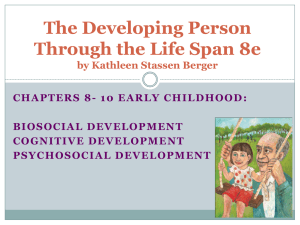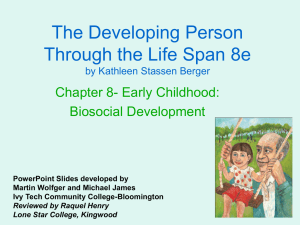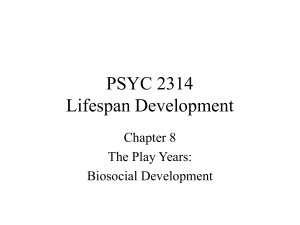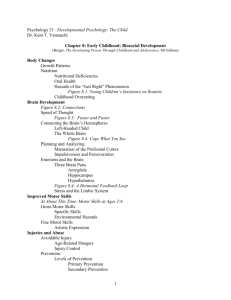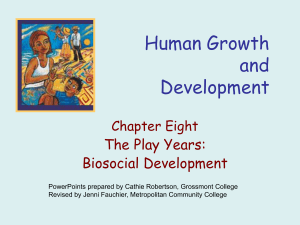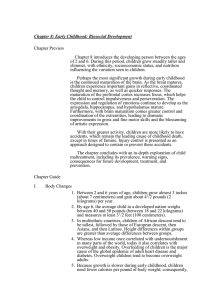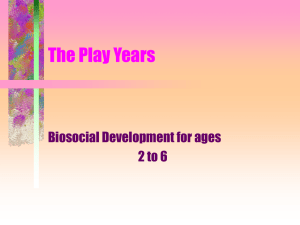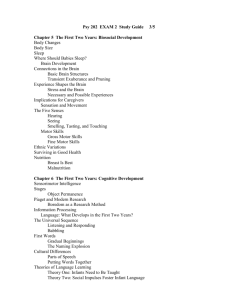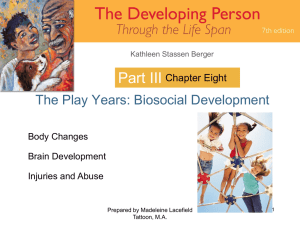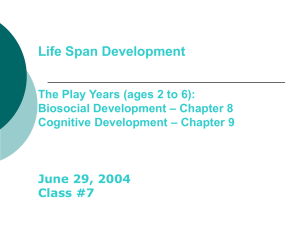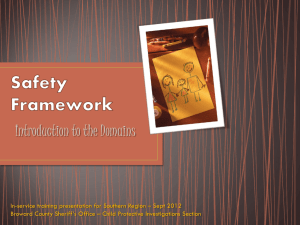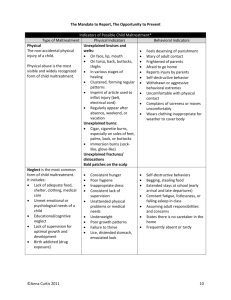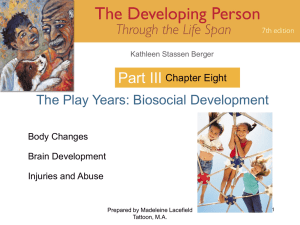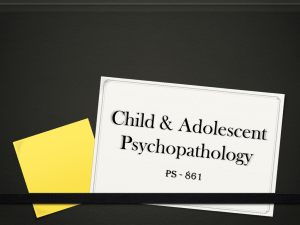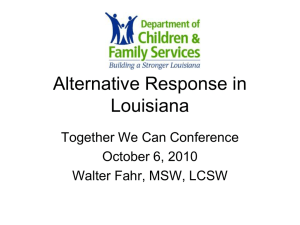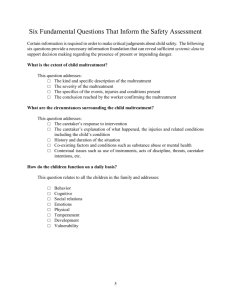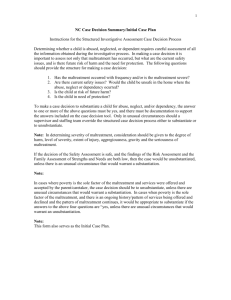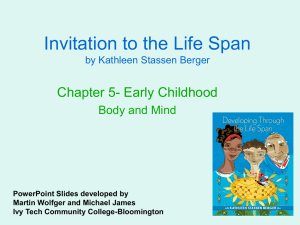File
advertisement
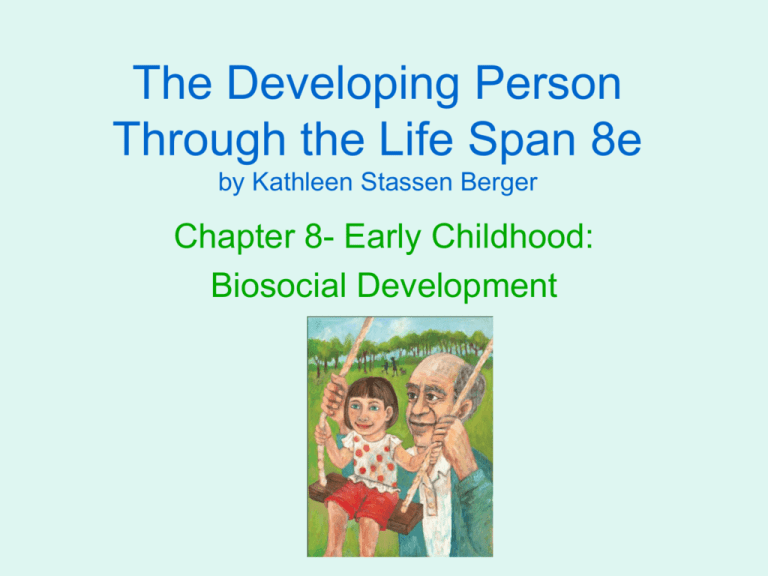
The Developing Person Through the Life Span 8e by Kathleen Stassen Berger Chapter 8- Early Childhood: Biosocial Development Body Changes Growth Patterns • Children become slimmer as the lower body lengthens. • From age 2 through 6, well-nourished children grow almost 3 inches and gain about 4 1⁄2 pounds annually. • Center of gravity moves from the breastbone down to the belly button. Body Changes Nutrition • Obesity is a more frequent problem than malnutrition. • Children in low-income families are especially vulnerable to obesity • Overfeeding is causing an epidemic of illnesses associated with obesity – Such as heart disease and diabetes Changes in Eating • Appetite decreases from 2-6 years old • Wariness of new foods is adaptive • Need a high quality diet Oral Health • Many children want foods that are high in fat, salt, and sugar. • Adults frequently give in, even rewarding children with candy. – Too much sugar and too little fiber rot the teeth. – Tooth decay is the most common disease of young children in developed nations • Affects more than one-third of all children under age 6 in the United States Brain Development • By age 2, the brain weighs 75% of what it will in adulthood – extensive sprouting and then pruning of dendrites has already taken place. • The brain reaches 90% of adult weight by age 6. Brain Development • Speed of thought – Faster due to myelination • Corpus callosum – Communication becomes more efficient • Lateralization – specialization in certain functions by each side of the brain, with one side dominant for each activity Maturation of the Prefrontal Cortex • From ages 2 to 6, maturation of the prefrontal cortex has several notable benefits: – sleep becomes more regular – emotions become more nuanced and responsive – temper tantrums subside Improved Motor Skills • Gross Motor Skills – Balance improves – Gait smooth and rhythmic by age 2 – Upper- and lower-body skills combine into more refined actions by age 5 – Greater speed and endurance • Fine Motor Skills – Self-help: dressing, eating – Drawing Fine Motor Skills • More difficult to master than gross motor skills • Many involve two hands and both sides of the brain • Typically mature about 6 months earlier in girls than boys Artistic Expression Maturation is evident in the progression of skills development Injuries and Abuse • Accidents are the leading cause of death worldwide for people under age 40. • Among 2- to 6-year-olds in the United States, four times more children die in accidents than die of cancer, the second most common cause of death. • Injury control/harm reduction- Practices that are aimed at anticipating, controlling, and preventing dangerous activities. Child Maltreatment • Child maltreatment – Intentional harm to or avoidable endangerment of anyone under 18 years of age. • Child abuse – Deliberate action that is harmful to a child’s physical, emotional, or sexual well-being. • Child neglect – Failure to meet a child’s basic physical, educational, or emotional needs. Factors Related to Childhood Injury • Gender and temperament • Poverty, low parental education • Births to teenagers not ready for parenthood • Shortage of high-quality child care • Societal conditions Child Maltreatment • Reported Maltreatment: harm or endangerment about which someone has notified the authorities, up to 3.5 million a year in the U.S. • Substantiated Maltreatment: harm or endangerment that has been reported, investigated and verified, 1 in 80 children in the U.S. Warning Signs • Delayed development, slow growth • Post-traumatic stress disorder: child is fearful, startled by noise, defensive, etc. • Fantasy play around violence and sex • Repeated injuries, physical complaints • Hyper vigilance, absences from school • Fear of caregiver, going home Consequences of Maltreatment • Severely maltreated children suffer physiologically, academically, and socially in every culture. • Maltreated children come to consider other people to be hostile and exploitative, making them fearful, aggressive, and lonely. • The earlier abuse starts and the longer it continues, the worse their peer relationships are. Three Levels of Prevention • Primary prevention – any measure that reduces financial stress, family isolation, and unwanted parenthood. • Secondary prevention – home visits by nurses, high-quality day care, and preventive social work—all designed to help highrisk families. • Tertiary prevention – reduces harm when maltreatment has already occurred. Requires permanency planning, an effort to find a long-term solution to the problem.
